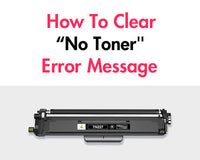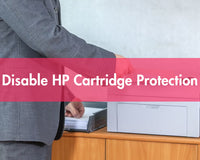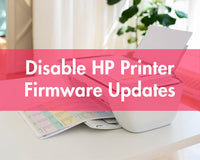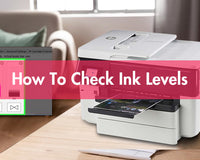With the rapid development of business, having a high-quality business card has become essential for showcasing your unique personality and professional image. Today, an increasing number of people are choosing to print their business cards at home, which not only saves costs but also enhances flexibility. By printing at home, you can adjust the style of your business cards according to your needs. Additionally, it can help avoid potential communication errors or delays that may occur in traditional business card production processes. Printing via PDF files also ensures the consistency between the printed output and the design layout. Now, let’s explore the specific steps for printing business cards at home from PDF.
Quick Overview of Printing Business Cards at Home from PDF
| Preparation Work | 1. Prepare the business card design for printing 2. Ensure your business card PDF is print-ready 3. Choose appropriate printing papers 4. Prepare the necessary tools |
| Standard Paper Setup | 1. Calibrate the colors 2. Adjust the PDF format 3. Adjust the printer settings 4. Put the paper correctly 5. Perform the print job |
|
Special Business Card Paper Setup |
1. Calibrate the colors 2. Adjust the PDF layout 3. Adjust the printer settings 4. Test printing process |
| Post-Printing Tips | 1. Ensure adequate drying time 2. Handle business cards properly |
The Preparation before Printing
Before you start printing, you need to do the following preparations.
1. Prepare the Necessary Tools
Before printing, you need to prepare the following tools. They can help you complete your printing tasks more efficiently.
a. A Quality Inkjet or Laser Printer
b. Business Card Paper or Cardstock from Office Supply Stores
c. Business Card Design Software or Template
d. A Paper Cutter or Scissors for Precise Cuts
If you have completed all of the above steps, you can start printing business cards at home from PDF.
2. Prepare the Business Card Design for Printing
A well-designed business card is more than just a way to share contact information—it’s a showcase for your brand’s advantages. However, designing business cards may be overwhelming, especially when you are unfamiliar with the specific details that make them more visually appealing. Don’t worry, we can provide some tips to help you design your business cards.
a. Use a Clear Hierarchical Structure
A clear hierarchical structure makes business cards appear more concise and professional. Start with your logo, as it is the most recognizable element of your brand. Next comes your name and position, followed by secondary elements such as your phone number, email address, and website.
b. Choose Appropriate Colors
Choosing appropriate colors can enhance the visual appeal of your business card and reflect your brand image. When selecting colors for your business card, you need to consider the company’s main business, the colors of the company logo, and the overall design style. Additionally, please avoid overly flashy colors in your design to ensure the text stands out clearly.
c. Design a Proper Bleed Area
To avoid awkward white borders after trimming, you need to design a proper bleed area. The bleed area is the extra design area that extends beyond the trim area, typically 0.125 inches or 3 mm on each side.
For example:
If your final design size is 8.5 × 11 inches:
Add 0.125 inches to each edge
Final file size with bleed = 8.75 × 11.25 inches
3. Ensure Your Business Card PDF is Print-ready
Before printing begins, please carefully check the following key elements to ensure perfect printing results for your business cards:
a. High Resolution (at least 300 DPI): This ensures that text and images are clear and sharp.
b. CMYK Color Mode (not RGB): CMYK is the standard mode for printing, ensuring that colors are rendered as intended.
c. Proper Bleed and Safe Area Settings: Appropriate bleed and safe areas ensure that important text or logos are not affected during trimming.
d. Embedded or Outlined Fonts: This prevents font shifting during printing, especially when using non-standard fonts.
e. Saved as a Print-ready PDF: You need to save your business card design as a print-ready PDF with no layers or transparency issues. A PDF file ensures that all elements remain fixed in position, minimizing potential shifting issues during printing.
4. Choose Appropriate Printing Papers
There is no one specific brand or paper type that’s considered the official paper for business cards. High-quality business card paper can be any style or any brand — provided it meets certain requirements. In fact, the paper materials commonly used for printing business cards can be divided into two types: standard paper and special business card paper. You can choose the appropriate paper according to your needs.
a. Standard paper includes cardstock, coated paper, etc. It is a thicker and more durable form of paper than the stuff you might have in your home printer. It is inexpensive and its quality can meet the needs of most users.
b. Business card paper is typically pre-cut paper that can be easily separated after printing, including premium coated paper, cotton paper, recycled paper, and other high-quality papers. It is specifically designed for business cards and can produce more vivid and clear printing results.

How to Print Business Cards at Home from PDF
We will provide two specific methods for printing business cards at home from PDF. These methods are for two different types of printing paper. You can choose the one that best suits your needs.
1. Standard Paper Setup
The standard paper method is the most flexible solution, allowing you to use any high-quality cardstock compatible with your printer. This method offers maximum flexibility in paper selection and finishing options. Here are the detailed steps:
a. Calibrate the Colors
Begin by calibrating your printer’s color settings. Access your printer’s utility software and run any available calibration tools, such as Adobe Photoshop, Affinity Designer, and so on. This ensures consistent color reproduction across all your business cards.
b. Adjust the PDF Format
You can open your business card PDF file via a PDF reader. Make sure the file is formatted correctly. The PDF file should be adjusted to business card size (typically 3.5 x 2 inches for US standard size) or formatted as multiple business cards per page for efficient printing.
c. Adjust the Printer Settings
You need to adjust the printer settings through the print dialog. Select “Properties” or “Preferences” and choose the highest quality print setting available. Set the paper type to “Cardstock” or “Heavy Paper” and make sure that marginless printing is enabled (if the printer supports this feature).
d. Put the Paper Correctly
Next, you need to insert the selected cardstock into the printer’s paper tray. Many printers have a dedicated paper slot or tray for heavy paper. You need to align the paper correctly and adjust the paper path to prevent the paper from skewing during printing.
e. Perform the Print Job
Select “Actual Size” or “100%” scaling in the print dialog to maintain the correct size. If you are printing multiple cards per page, make sure the layout matches the card stock size. Click Print and confirm that the first print meets your expectations before moving on to the other copies.
2. Special Business Card Paper Setup
Using pre-cut business card paper ensures consistent card sizes. This can save you a lot of time and energy. Below are the specific steps to follow:
a. Calibrate the Colors
Like the first method, you'll also need to perform a color calibration to ensure that the printed business cards are properly colored. You can run any of the available calibration tools by accessing the printer’s utility software.
b. Adjust the PDF Layout
You need to adjust your PDF layout to match the specific template of your special business card paper. This ensures that the core elements of the business card are not missing.
c. Adjust the Printer Settings
Set the printer to match the specific brand and weight of your business card paper. Many pre-cut papers require specific settings for best results. You can choose to reduce the print speed to ensure accurate ink application.
d. Test Printing Process
To save money, it is necessary to make a test print on regular paper to verify alignment. You can hold the test print and your business card paper up to the light to check the alignment. If the test page fits the card stock perfectly and meets your needs, you are ready to start using the card stock for batch production.
Post-Printing Tips
1. Drying Time
Before handling printed business cards, make sure to dry them completely, especially those printed by inkjet printers. This is because inkjet ink is more prone to smudging. It is recommended to wait at least 15 minutes before handling.
2. Handle Business Cards
·If you print multiple business cards on one sheet of cardstock, you need to use a paper cutter or scissors to separate them after drying.
·If you use special business card papers, you need to wait for them to dry completely and then you can separate the cards along the perforations.
Conclusion
By learning about the preparations before printing, the specific printing methods, and the post-printing processing steps, you can easily print business cards at home from PDF. With a bit of patience and attention to detail, you’ll be able to create impressive, high-quality business cards right at home from PDF. Give it a try!












